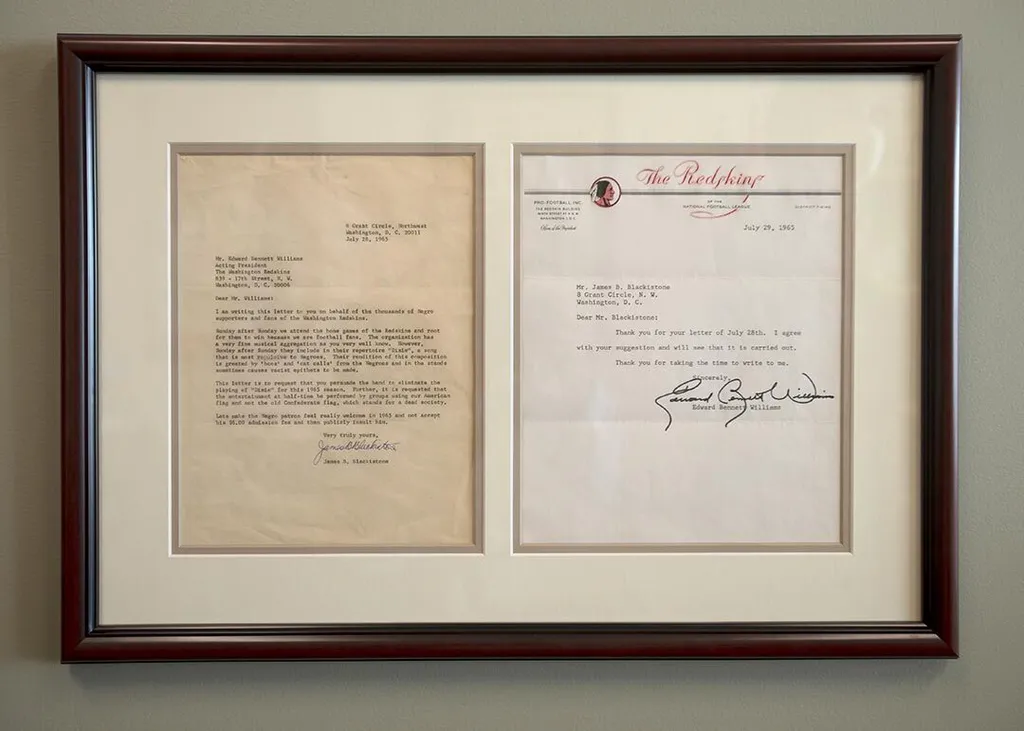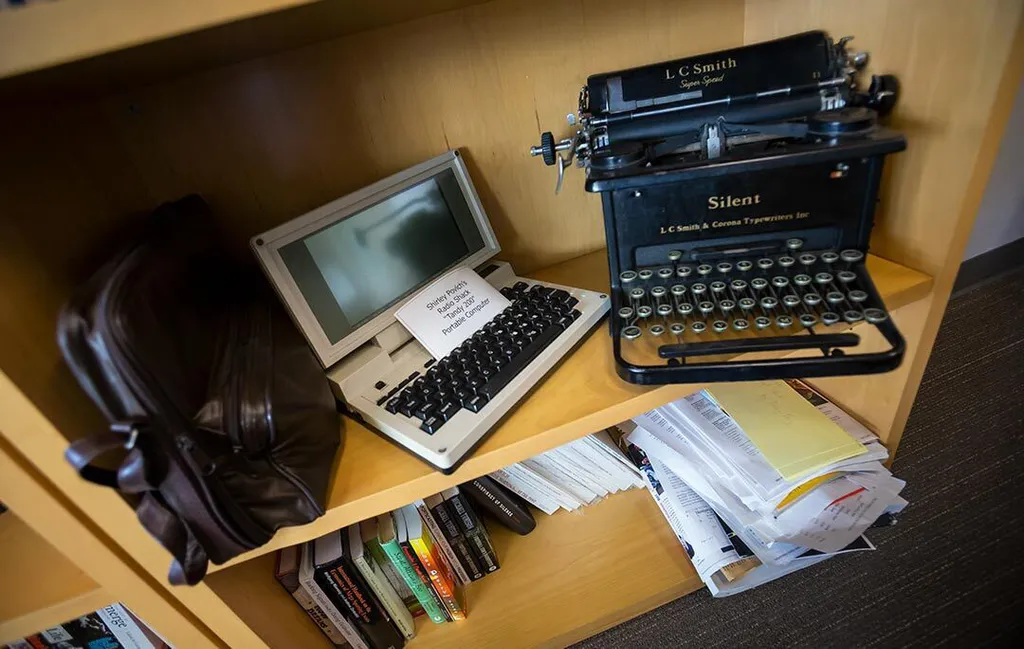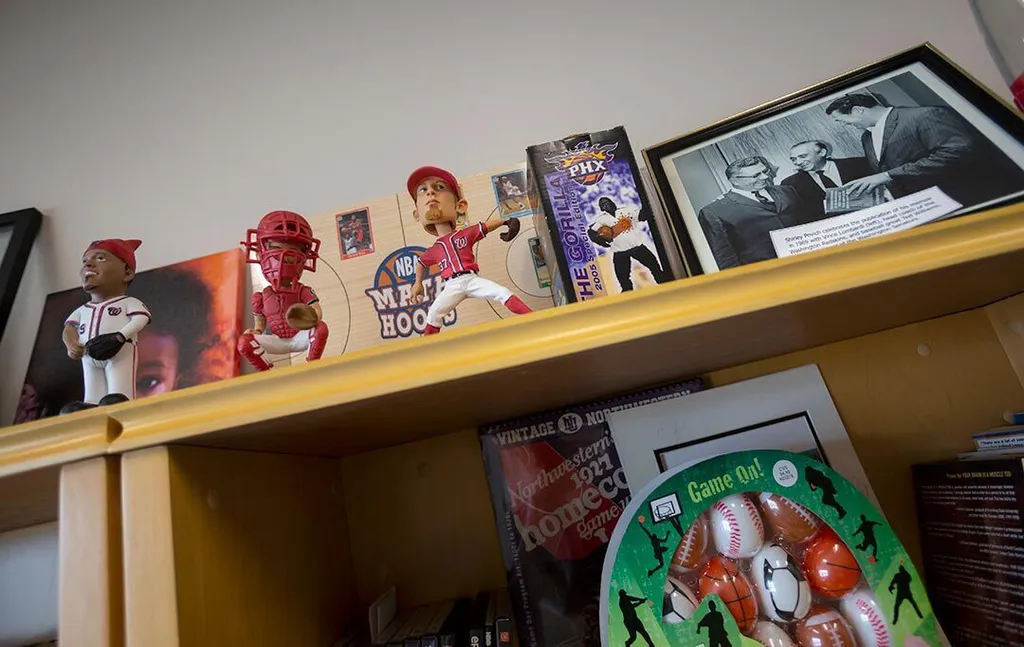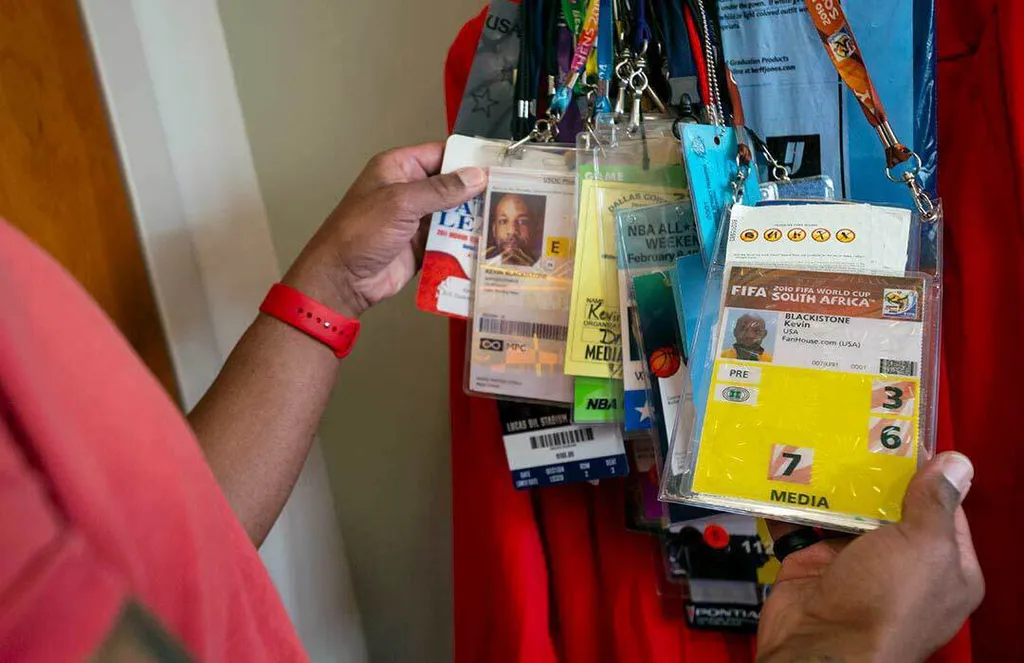- March 15, 2022
- By Karen Shih ’09
From an ear-splitting South African vuvuzela to a striking pop-art interpretation of a powerful Olympics moment, the collectibles in Professor of the Practice Kevin Blackistone’s office in Knight Hall transport visitors on a journey through iconic moments in sports history.
Blackistone, a Washington Post columnist who initially served as the Shirley Povich Chair in Sports Journalism when he came to the Philip Merrill College of Journalism in 2008, honors the legacy of legendary sportswriter Povich and his own parents, who called out social and racial injustices. He shares stories behind his personal and professional memorabilia with Maryland Today.
The framed OIympics Black Power salute
“This is the most iconic sports photograph ever,” says Blackistone, who commissioned the piece from a Dallas artist, Curt Eichelberger, and has met all three athletes. During the 1968 Olympics in Mexico City, as the struggle for Black civil rights continued in the United States, 200-meter sprint gold medalist Tommie Smith and bronze medalist John Carlos stood on the podium and raised black-gloved fists in protest.
“These guys, before the phrase ‘athlete activist’ was a thing, were already doing athlete activism. They got drummed out of the Olympics over this. Their lives were pretty much upended over this. And if you talk to them today, they would do the same thing. So when people talk about sacrifice, if you’re not talking about Tommie Smith and John Carlos, you’re not really talking about sacrifice.

Washington Redskins letters
In 1965, Blackistone’s father James, a native Washingtonian and avid fan of the city’s NFL team, wrote its president, Edward Bennett Williams, to ask that that it stop displaying Confederate imagery and playing the song “Dixie” at home games.
“To his credit, Williams responded and said, ‘Alright, we’ll cut it out, thanks for bringing it to my attention,’” Blackistone said. “And that was that.”
A vocal critic of the team’s former name, he is a co-producer of the upcoming documentary, “Imagining the Indian: The Fight Against Native American Mascoting,” which examines the movement to remove stereotypically Indigenous names and images from sports teams.

Mom’s first typewriter and Povich’s last laptop
Blackistone displays writing tools from two distinct eras side by side. The shiny, black L.C. Smith “Silent Super Speed” typewriter, which he thinks is from the 1940s, belonged to his mother, a career secretary, and the bulky, gray Radio Shack “Tandy 200” laptop belonged to Povich, who filed his last column on the day he died in 1998.
“I never knew Shirley Povich, though I grew up delivering [his columns] because I was a Washington Post paperboy,” he said. “He was a great sportswriter in the sense that he understood sports beyond the actual game. He understood the impact it had on society. He was famously one of the first sports journalists to urge Major League Baseball to integrate. He was constantly and famously criticizing the Washington football team for not integrating. He was often pushing those types of issues, which today we call social justice issues. So being part of that legacy is inspiring and not something I take lightly.”

The gorilla mascot bobblehead
“I was on the TV show I do [on ESPN], ‘Around the Horn,’ in 2005. And the question was, ‘Who’s the most famous Phoenix Sun? And Bob Ryan, the legendary Hall of Fame basketball writer for The Boston Globe, said ‘Tom Chambers.’ He went into this great soliloquy about what a great player he was. I said, ‘No, it’s the Phoenix gorilla.’ I talked about how he was the greatest mascot in the history of the NBA. He was one of the first to do things like ride a motorcycle onto the court or rappel from the ceiling. Everybody who came after him tried to do his antics. The gorilla heard about it and sent me a bobblehead.”

Press passes galore
If you can name a sporting event, Blackistone’s probably covered it. Tour de France? Check. Super Bowl? Check. The Olympics? Check. The dozens of press passes hanging from his coat rack and door knob show the breadth of Blackistone’s travels over the last 30 years, ranging from Wimbledon to the NBA Finals.
But the one that stands out most to him was the soccer World Cup in South Africa. He brought home a vuvuzela—one of the ubiquitous plastic horns blown by fans during those games—as well as many cherished memories.
“It was the first major global sporting event held in a free South Africa. It’s a beautiful country with a horrible history,” he said. “As a Black person, it meant a lot to me. I wanted to go to Robben Island and go to Soweto and see the other townships. I got to see where the freedom fighters and Nelson Mandela were imprisoned. I wanted to see where Steve Biko led his protests. I got to know some South Africans who took me to places that tourists might not go.”
This is part of an occasional series offering a look inside some of the most interesting faculty and staff offices around campus. Think you have a cool workspace—or know someone’s that you’d like to recommend? Email kshih@umd.edu.
Topics
Campus & CommunityTags
A Peek Inside